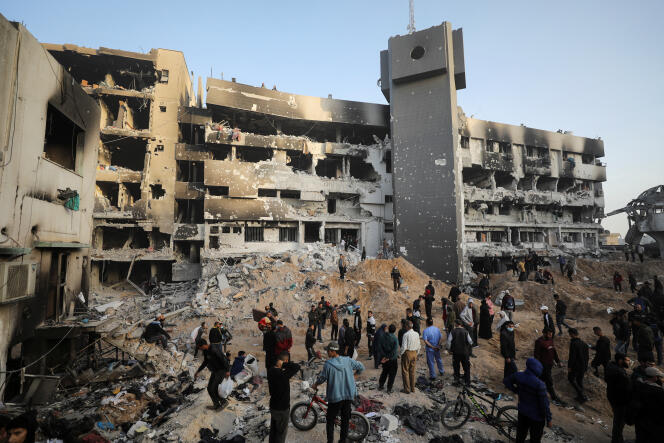


The Israeli army left behind only ruins, ashes and corpses at the Al-Shifa Hospital in Gaza after they withdrew on Monday, April 1. Built after the Second World War by the British occupiers, the Gaza Strip's largest hospital had become a Palestinian symbol, a vessel in the heart of the city that grew on its outskirts and remained standing, despite the 15 wars Israel has waged against the enclave since 1948, according to Middle East historian Jean-Pierre Filiu. The hospital had a capacity of 800 beds, and 2,500 to 3,000 mothers gave birth in the maternity ward every month.
Today, the hospital is no longer standing. Israeli forces laid siege to the site on March 18 before their withdrawal at the beginning of April. "Everything has been destroyed or burnt. The hospital has been turned into a cemetery. We simply have to build a new one," said Kayed Hamad, a Palestinian resident who visited the site. Hamad, along with Palestinian journalists and a spokesperson for the civil defense agency on site, claims that some 300 bodies were found in and around the hospital. The number does not include the bodies left behind by the Israeli army during their November 2023 operation. "Those bodies had been moved into a pit. Those discovered yesterday are the bodies from this [last] battle," Hamad said on Monday.
Israeli army spokesperson Daniel Hagari said that "200 terrorists" had been killed during their siege of the hospital and described the operation as a success. The Al-Shifa Hospital was used as a "base by Hamas," Hagari said, an area that was deemed safe, with water, food and electricity, several months after the army's first operation there at the start of the ground offensive in November, following the Hamas attack on October 7.
Israel did not hesitate to attack the hospital again, at the risk of stirring up the international community. Some "900 suspects" were arrested, according to the army. More than 500 militants were identified by Israel as members of Hamas (two-thirds) and Islamic Jihad (one-third). Top leaders were eliminated, including Fadi Dewik and Zakariya Najeeb, who were released in 2011 as part of the exchange of 1,027 Palestinian detainees for the Israeli soldier Gilad Shalit, held hostage for five years in the Gaza Strip. Equipment, weapons and money – 12 million shekels, or €3 million – were seized, according to Hagari, as well as documents, including computer files which will be dissected by Israeli intelligence services.
The army spokesperson insisted on the evacuation of civilians during the attack to limit losses during the operation. According to Hagari, there were 6,200 people in the compound when IDF forces arrived, most of them civilians. Hagari said they evacuated between 300 and 350 patients and medical staff and provided them with food and water, as well as medical equipment. He said 140 patients were still in the facility, while 200 had been evacuated to other hospitals. This last procedure is a fundamental imperative of international humanitarian law, which requires that "in the conduct of military operations, constant care shall be taken to spare the civilian population, civilians and civilian objects," according to Article 57 of the Additional Protocol to the Geneva Conventions.
You have 57.5% of this article left to read. The rest is for subscribers only.
